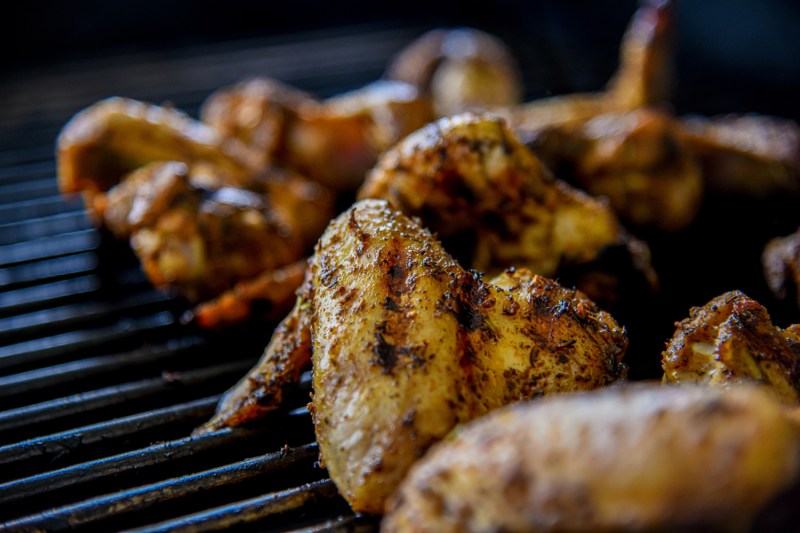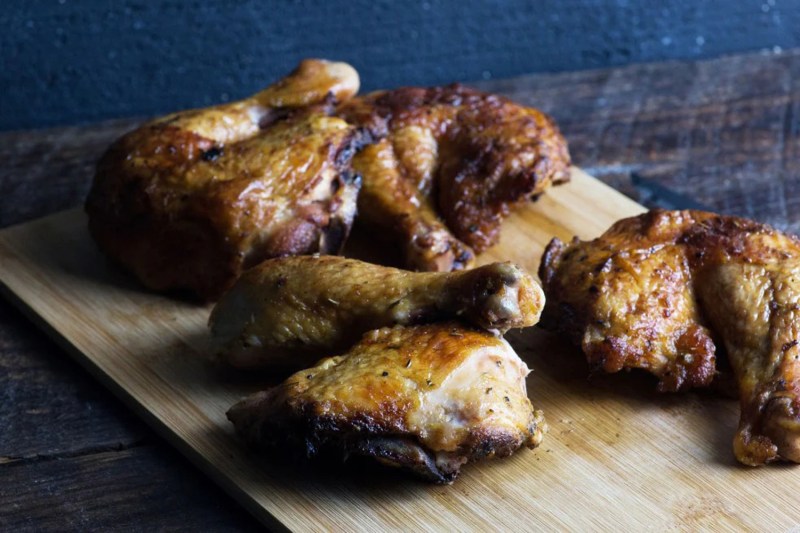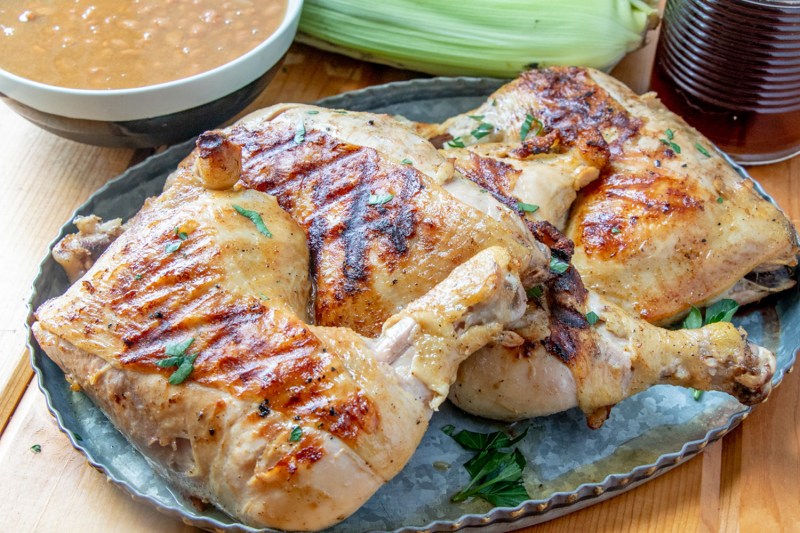
Looking for a simple yet delicious summer chicken recipe? Cornell chicken, a savory grilled poultry with a delicious tang, is the answer to your barbecue dreams. This grilled chicken recipe also has an interesting origin story — it was created by Dr. Robert Baker, a Cornell University food scientist. Invented in 1950, Dr. Baker created Cornell chicken to encourage Americans to eat more chicken. Today, Cornell chicken is a cornerstone of upstate New York barbecue.
Related Guides
- How to Grill Chicken
- How to Make Miss Lily’s Jerk Chicken Recipe
- How To Make a Sweet and Crispy Hawaiian Fried Chicken
History of Cornell Chicken

When Cornell chicken was invented in 1950, Americans didn’t consume much chicken. While chicken is incredibly popular currently, Americans in the 50s vastly preferred beef and pork. Dr. Baker was a professor and agriculture specialist at Cornell University and deeply interested in promoting more chicken consumption. Throughout his life, he created many chicken items, including: chicken hot dogs, salami, bologna, and even a version of the chicken nugget.
But his most successful invention was Cornell chicken, which utilized a marinade containing vinegar and raw eggs. The chicken recipe was published in a bulletin called Cornell Cooperative Extension Information Bulletin 862 and was an instant hit at Baker’s Chicken Coop in the New York State Fair. Soon, summer barbecues throughout upstate New York were filled with the smell of Dr. Baker’s innovative chicken dish.
The Marinade

The Cornell chicken marinade features oil, apple cider vinegar, poultry seasoning, salt, pepper, and egg. The combination of these ingredients produces a very complex flavor. The inclusion of the raw egg is very important. When mixed, the egg in the marinade helps the marinade stick to the chicken itself as well as keeping the oil and vinegar emulsified.
For modern consumers worried about raw eggs, remember that the marinade will be grilled over hot flames, killing any possible contamination. If one is still concerned, use pasteurized eggs for another level of food safety.
Cornell Chicken, AKA Fireman Chicken

(By Jessica Formicola, founder of Savory Experiments)
Jessica Formicola is an author, business coach, photographer, recipe developer, spokesperson, TV personality, globetrotter, and contributor to Parade, Better Homes & Gardens, Mashed, and The Daily Meal Food + Travel. “This recipe came to me from a fireman in Rochester, NY and is a family staple,” said Formicola.
Ingredients:
- 4 chicken quarters or chicken pieces of choice
- 1/2 cup mayonnaise
- 1 cup vegetable oil
- 2 cups cider vinegar
- 1 tbsp fine sea salt
- 1 tbsp poultry seasoning
- 1/2 tsp ground black pepper
- 1 tbsp garlic powder
- 1 tsp paprika
- Cooking spray
Method:
- In a medium mixing bowl, combine mayonnaise, vegetable oil, cider vinegar, fine sea salt, poultry seasoning, ground black pepper, garlic powder, and paprika. Whisk until smooth.
- Pierce chicken with a fork several times to allow the marinade to really sink in. Place chicken quarters into a large airtight plastic bag or a tight-fitting container. Cover with marinade. Refrigerate for a minimum of 2 hours, maximum of 24 hours.
- Heat grill to medium-high heat. You can use either gas or charcoal, however, make sure you have a long burning charcoal if you go that direction.
- Place chicken on the charcoal grill on indirect heat. Reserve marinade and continue using, basting the chicken throughout the cooking process. Cook over indirect heat for 35 minutes, turning and basting.
- At 35 minutes, transfer to direct heat to get crispy and good char marks. At this time, stop basting. If you are using different cuts of chicken, please adjust accordingly.
- Remove from the grill and allow to rest for 5-10 minutes before serving. Discard any unused marinade.



